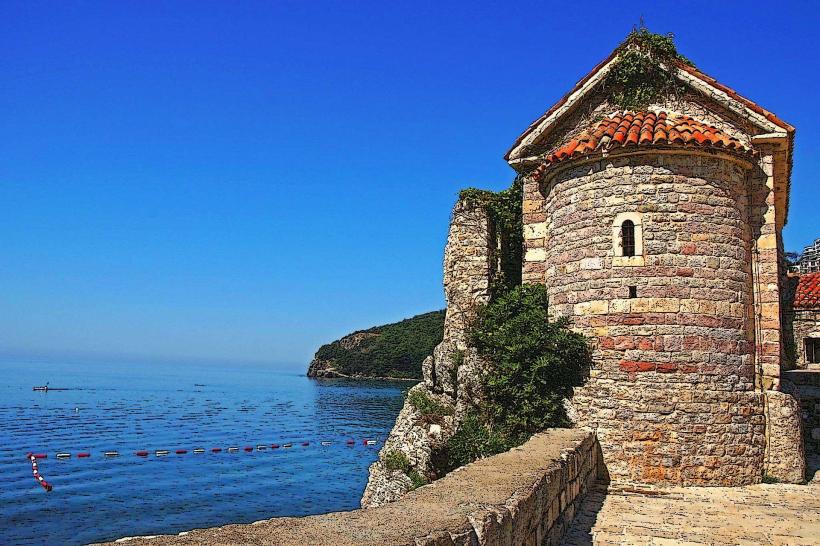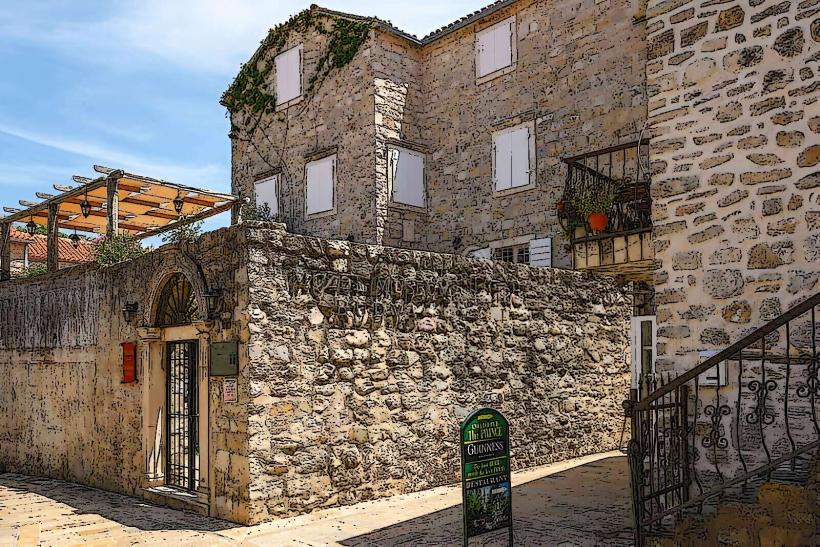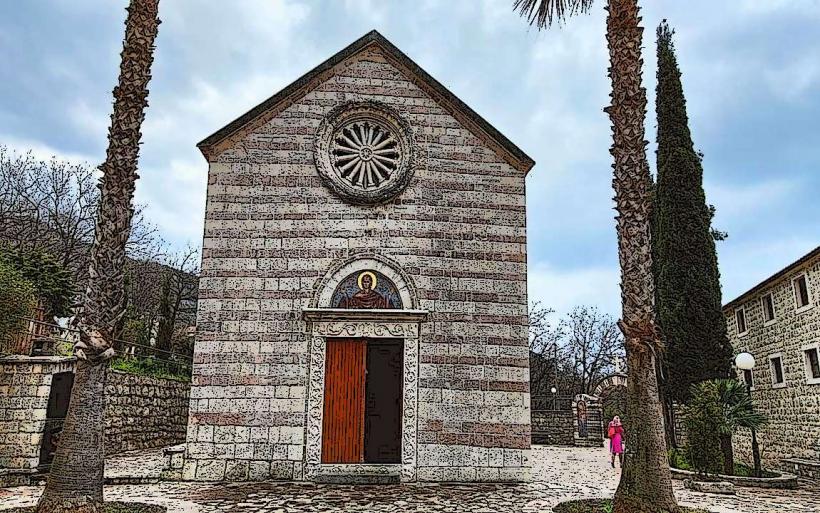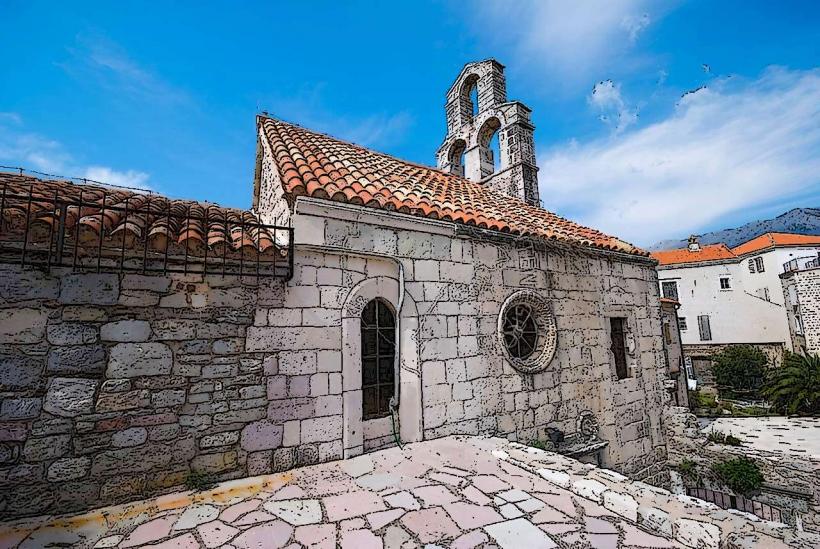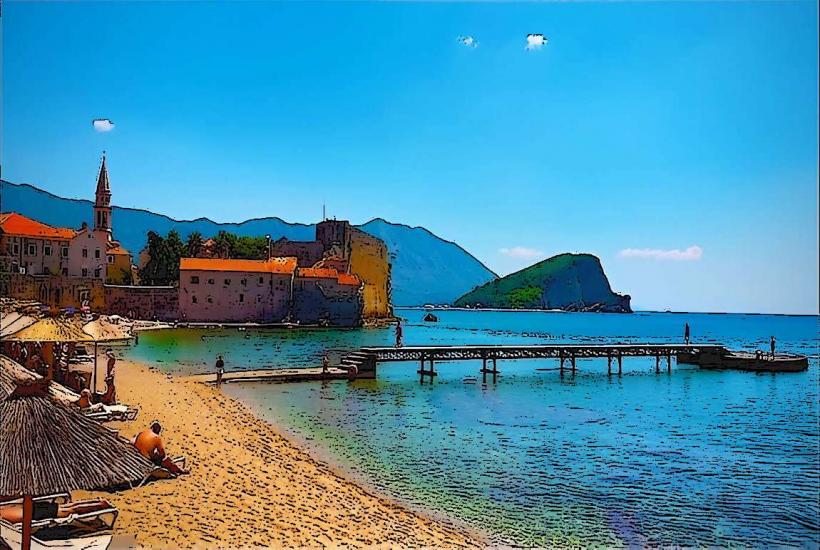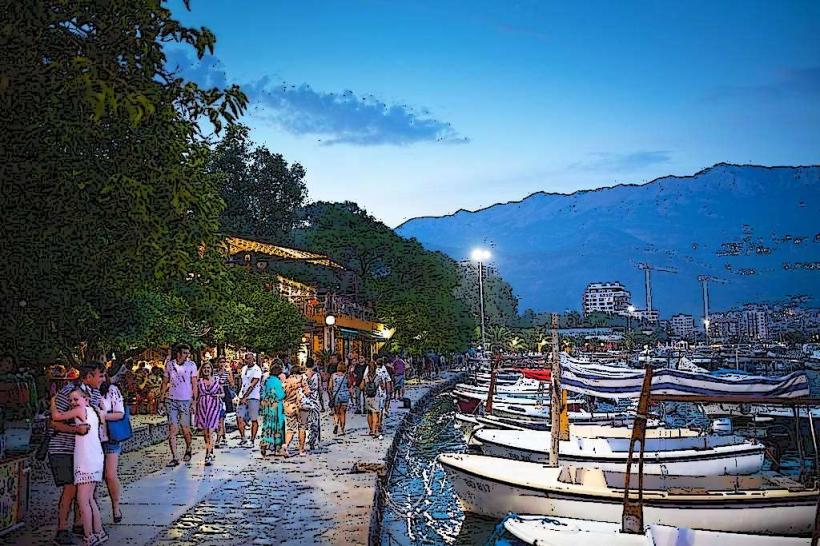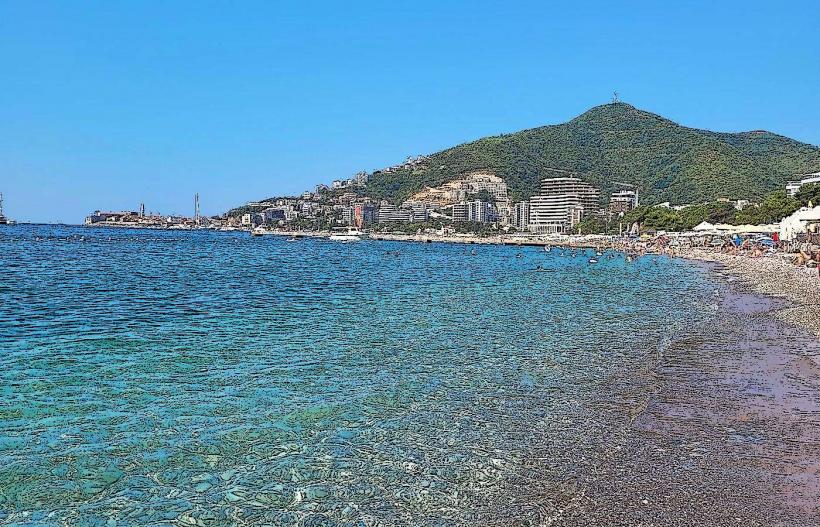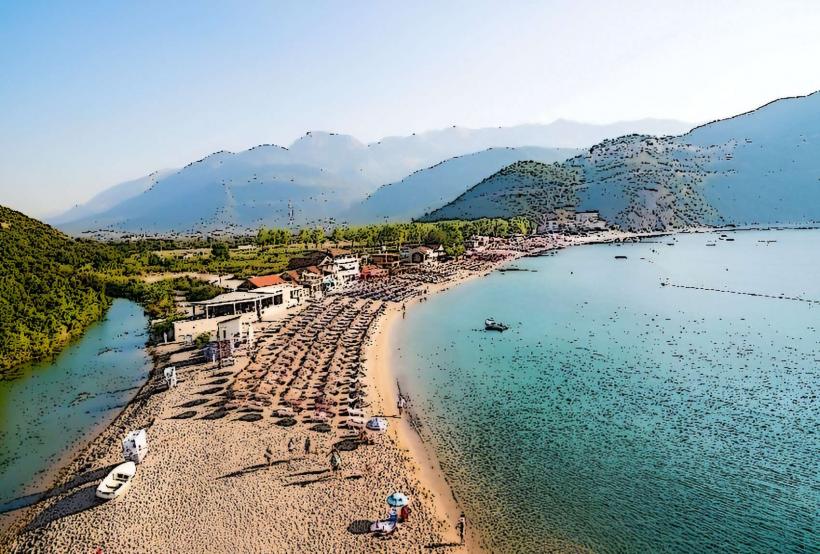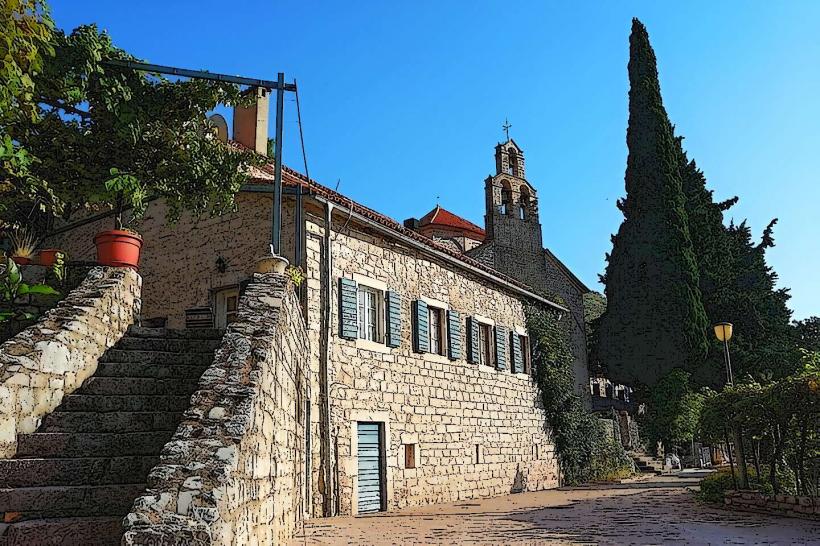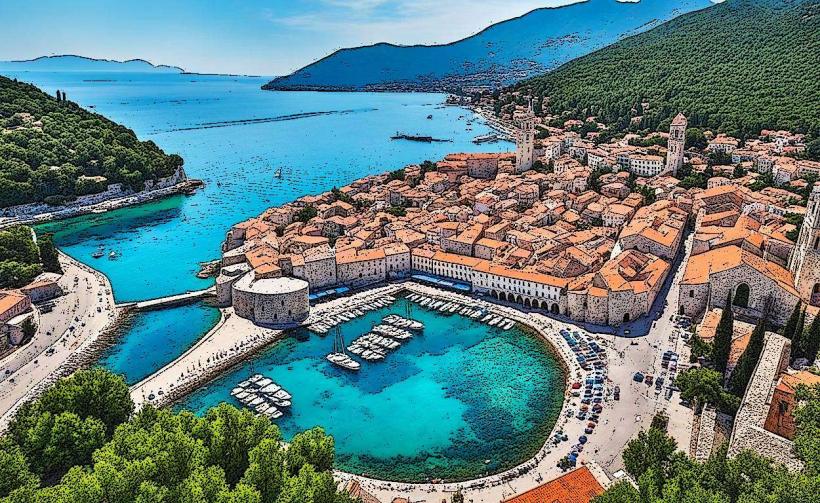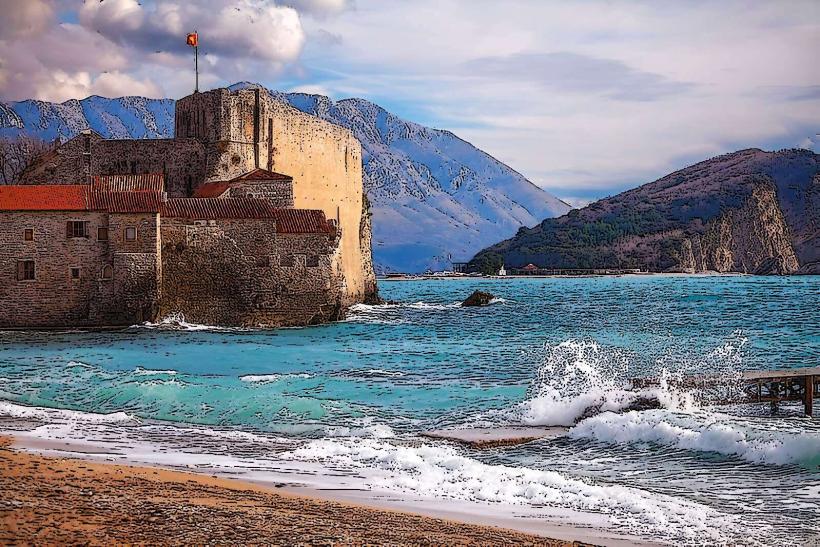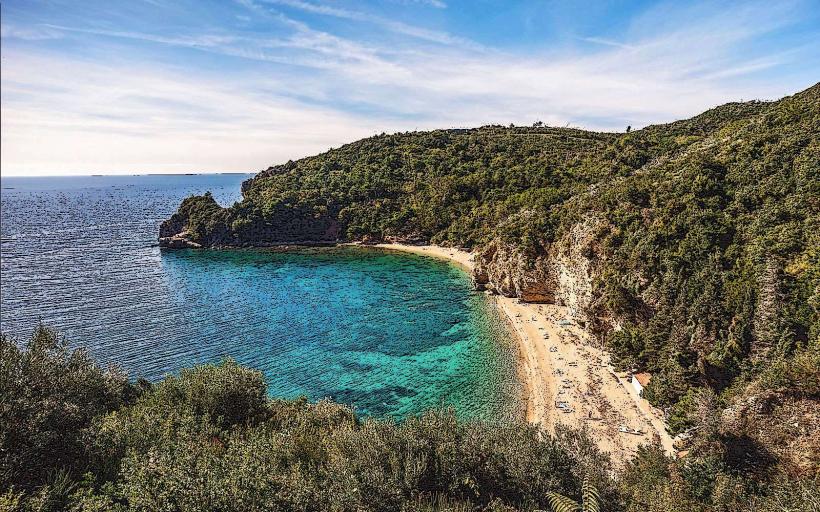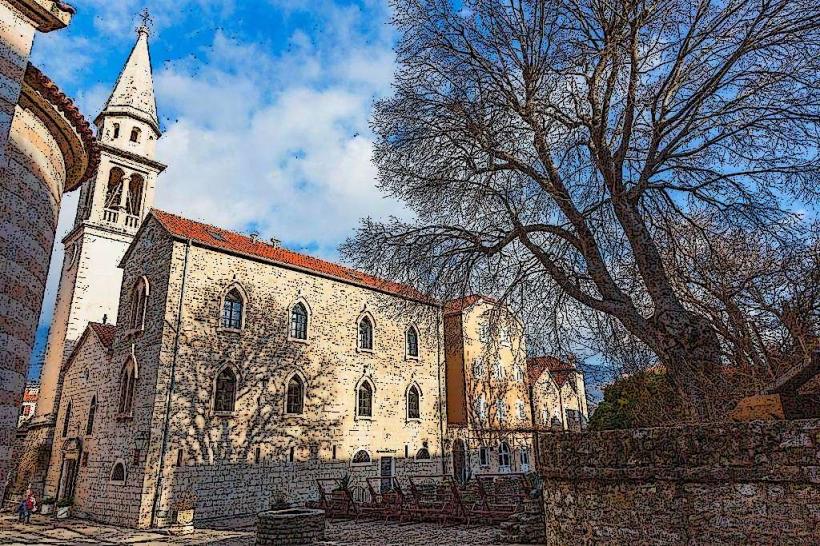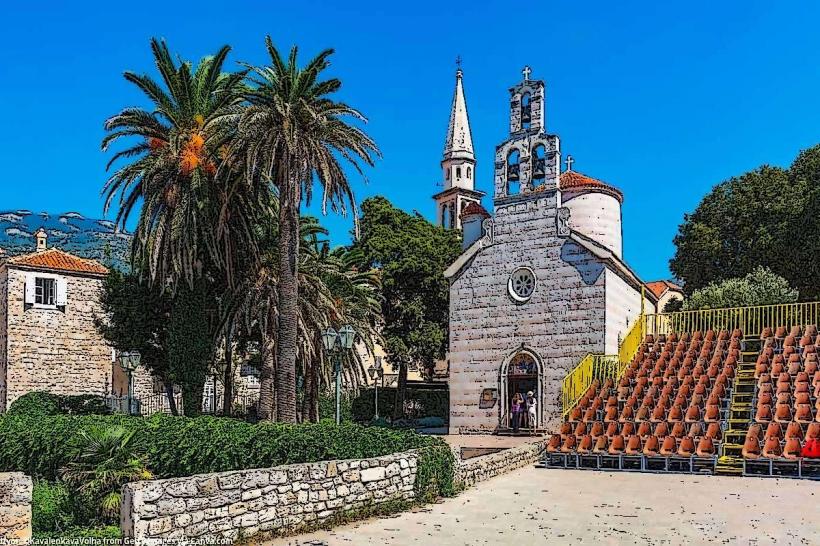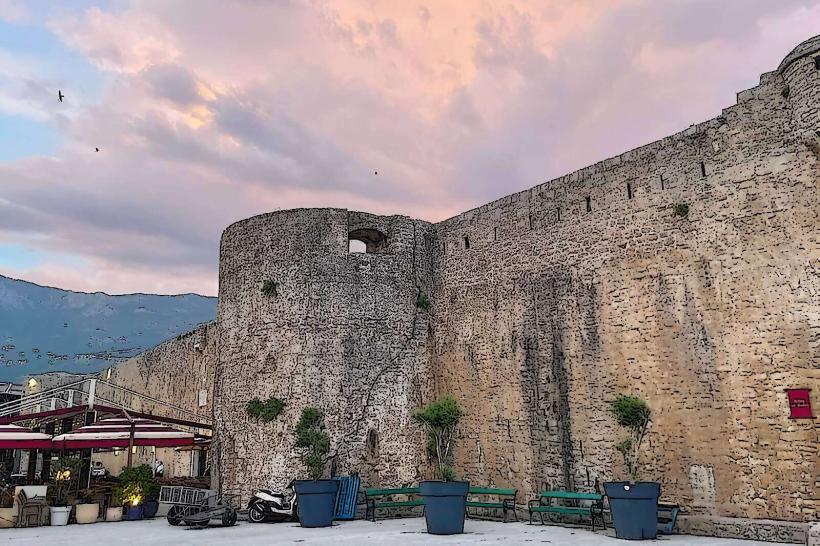Information
Landmark: Roman NecropolisCity: Budva
Country: Montenegro
Continent: Europe
The Roman Necropolis near Perast, Montenegro, is an important archaeological site that offers a glimpse into the ancient history of the region during the Roman period. The necropolis is a testament to the area’s rich history, particularly during the time when the region was part of the Roman Empire, and it provides valuable insights into the burial practices, culture, and daily life of the time.
Location
Proximity to Perast: The Roman Necropolis is located in the vicinity of Perast, a historic town situated along the Bay of Kotor. Perast itself is known for its Venetian-era architecture and historical significance, and the necropolis adds to the area’s cultural heritage, highlighting its importance in antiquity.
Surrounding Area: The necropolis is situated in a more remote part of the Bay of Kotor, with its site positioned on slightly elevated terrain, offering views over the water. The site’s location reflects the Roman practice of burying the dead in overlooking or prominent locations, often in areas of quiet and solitude.
Historical Significance
Roman Influence: The necropolis dates back to the Roman era, when the region was part of the Roman province of Dalmatia. The Bay of Kotor, known in ancient times as the Sinus Kotoraeus, was a key maritime region under Roman control, and the Roman Necropolis is evidence of the cultural and social practices of the time.
Burial Practices: The necropolis consists of a collection of tombs and grave markers, many of which are associated with Roman burial rituals. These burial sites were used for the interment of individuals, including soldiers, civilians, and possibly some elite members of the community. The types of tombs found at the site vary, with sarcophagi, stone coffins, and simple grave pits being common features.
Artifacts: Excavations of the necropolis have revealed a variety of artifacts that provide insight into the daily life and customs of the Romans in the region. These include pottery, jewelry, and tools, all of which help historians understand the material culture of the Roman inhabitants. Many of these objects are now housed in museums and are invaluable in piecing together the history of the area.
Cultural Exchange: The Roman Necropolis is also significant because it demonstrates the broader cultural exchange between the Romans and other civilizations in the Mediterranean region. The area had interactions with various peoples, including the Greeks and local Illyrians, and these influences are reflected in the artifacts and burial practices found at the site.
Archaeological Findings
Tombs and Sarcophagi: One of the main features of the Roman Necropolis are the sarcophagi, which were used for the burial of the dead. These stone coffins often have inscriptions and carvings, providing names and sometimes details about the individuals buried within. The sarcophagi were typically decorated with reliefs and symbols, offering a glimpse into Roman beliefs about the afterlife.
Grave Markers: In addition to the sarcophagi, the necropolis includes grave markers or headstones, many of which are inscribed with names and information about the deceased. These markers are invaluable for understanding the Roman social structure, as they can sometimes identify the deceased as soldiers, merchants, or other members of society.
Artifacts and Pottery: Excavations have uncovered various ceramic vessels, including amphorae, cups, and jugs, which were likely used in everyday Roman life. These artifacts help establish the economic and trade relations of the region, as many of these items were imported from other parts of the Roman Empire.
Jewelry and Personal Items: Small objects like jewelry and personal items have also been found in the necropolis, providing a sense of the social status and daily life of the individuals buried there. These items offer a glimpse into the personal tastes and wealth of the people, with some items showing evidence of Roman craftsmanship.
Visiting the Roman Necropolis
Accessibility: The necropolis is located in a more remote area, and while it is not as easily accessible as some of the other tourist attractions in the region, it can be reached with a bit of effort. Visitors who are interested in exploring the necropolis should be prepared for a moderate walk or a guided tour to learn about the historical significance of the site.
Guided Tours: Because the necropolis is not as developed as other sites, visitors may benefit from taking a guided tour to fully understand the historical context of the site. Knowledgeable guides can provide insight into the burial practices, artifacts, and the role the site played in the region's Roman history.
Nearby Attractions: After visiting the Roman Necropolis, visitors can explore nearby attractions such as Perast's Old Town, St. Nicholas Church, and the famous Our Lady of the Rocks island. The Bay of Kotor itself is home to many historical landmarks and scenic spots, making it a great place for a historical and cultural tour.
Conclusion
The Roman Necropolis near Perast is an important archaeological site that provides valuable insights into the history of the region during the Roman period. With its collection of tombs, sarcophagi, and artifacts, it offers a glimpse into the daily life and burial customs of the people who lived in the area over 2,000 years ago. The necropolis adds to the rich historical and cultural tapestry of the Bay of Kotor, making it a worthwhile site for history enthusiasts and those interested in ancient civilizations.

